|
|
|
John the Baptist - preaching and baptism
|
That John
preached and did so effectively is confirmed by Josephus, but what did he
preach about? Luke and Matthew suggest that the message was an apocalyptic one,
familiar even to this day: repent your sins, for the day of judgement is
coming. Of course, the Christian message is that John was prophesying the
imminent arrival of Christ: 'he that cometh after me is mightier than I, whose shoes I am not worthy
to bear'. However, some scholars suggest that the gospel references to
this were included by the Gospel writers to reinforce their message and
are not necessarily authentic.
There is little doubt,
however, that in view of the tinder-box political situation at the time,
such oratory would alarm the authorities. Luke tells us that publicans
(tax-gatherers) and soldiers sought advice from John, and his responses
could certainly be seen as subversive. Likewise his description of
Pharisees and Sadducees as vipers (Matthew) would not have gone down well
with the religious elite.
Sadly, much of the art showing
the preaching of John does not do his powers of oratory justice; there is
more concern with landscape and figure painting. The crowd in
Allori's painting seem quite engaged, although the bearded figure in the
centre looks as if he is about to nod off. Bacchiacca's version looks more
like a fashion show.
|
|
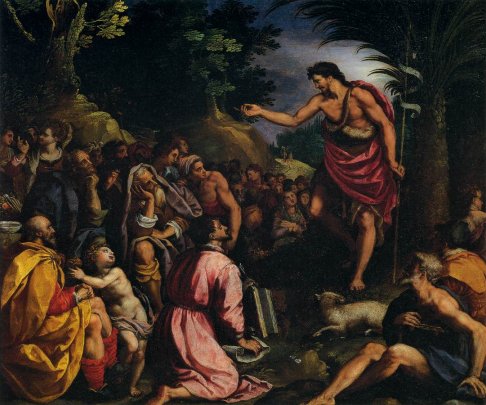
Alessandro Allori: Pitti Palace, Florence
|
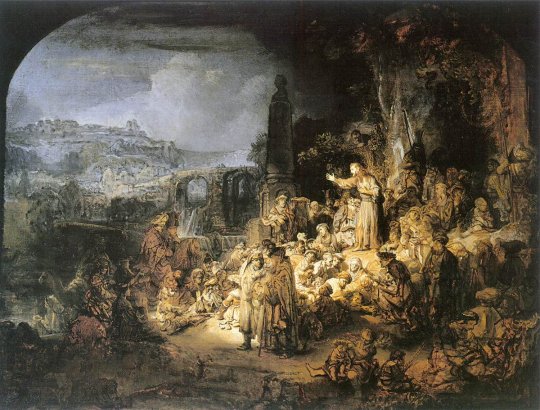
Rembrandt: Staatliche Museen, Berlin
|
|
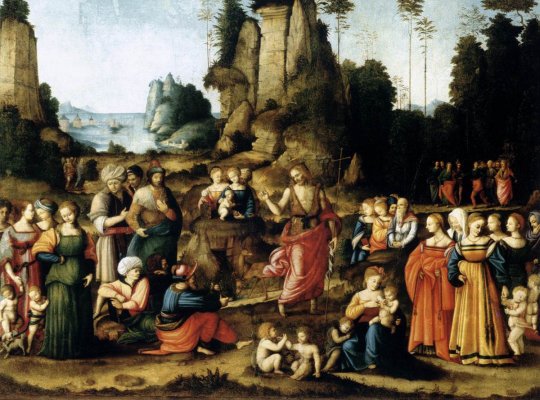
|
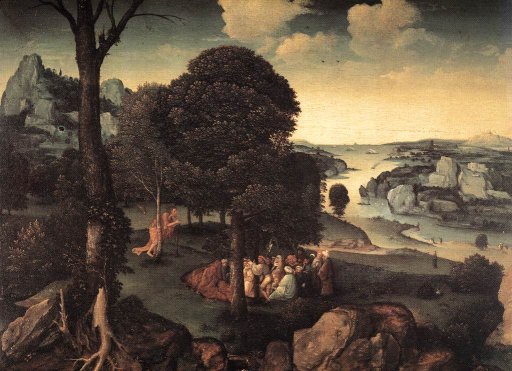 |
|
Bacchiacca:
Szépművészeti
Múzeum, Budapest
|
Joachim Patenir: Musées Royaux des
Beaux-Arts, Brussels
|
|
|
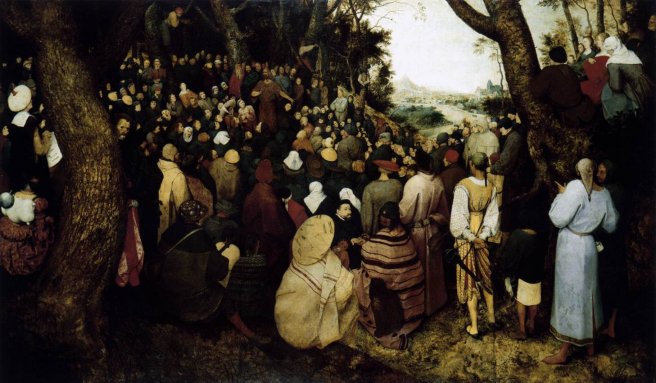
Pieter Bruegel: Szépművészeti Múzeum, Budapest |
Baptism
Images of John baptising Christ
are very familiar in art, though few artists have tackled images of
him baptising others. Below is one by Poussin, though it is probably not
very accurate. Tradition suggests that the rite involved total immersion.
What
has engaged theologians and biblical historians is the origin of the
baptism ritual, which was not a tradition in Judaism. Ritual washing was,
however, and could be repeated when required. For John, and
in later Christianity, it was a sacrament that happened just once.
Was it an invention of John, or was there an unrecorded tradition, perhaps
with pagan origins?
A fascinating discovery in
recent years poses more questions than answers. What has become known as
the cave of John the Baptist is located outside Jerusalem, very close to
the village of Ein Karem, the reputed birthplace of John. For an
account of excavations there read The Cave of John the Baptist
by Shimon Gibson - an engrossing read. There are strong indications
that ritual baptism took place here, and there is a rough wall painting
featuring what is said to be John the Baptist. What is significant is that
while some of the pottery fragments found there date from the time of
John, but others appear to date from long before his time. Does this
suggest that a previously unknown sect existed, for whom baptism
was important? And did John ever come here?
Baptism still
takes place in the River Jordan, as we saw on our visit in 2015. The
photograph shows it happening at Yardenit, just south of the Sea of
Galilee. This is not, however, the reputed site for John's baptismal
rites. This is further south, around nine miles north of the Dead Sea.
Sadly, this site is now polluted and the water flow is intermittent. |
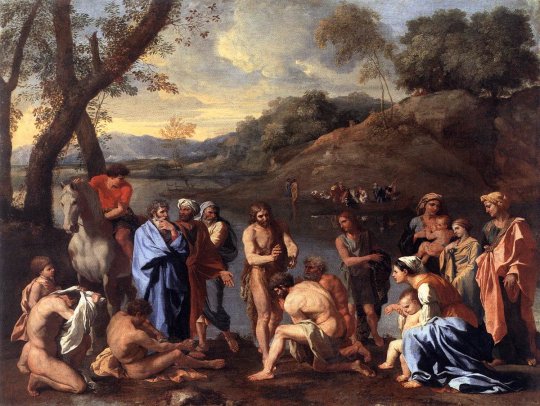
Nicolas Poussin: Baptising the
People. Louvre, Paris. |
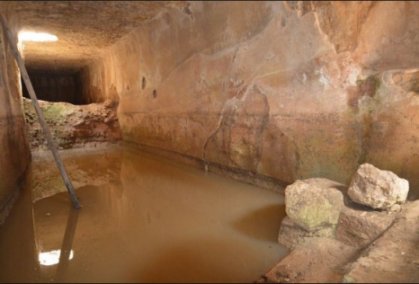
The
Cave of John the Baptist |
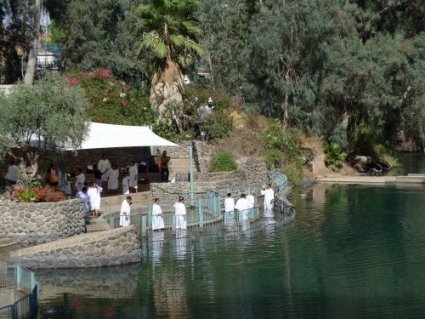
Yardenit,
on the River Jordan. |
|
John the Baptist page
1
Home page - explore the site
|